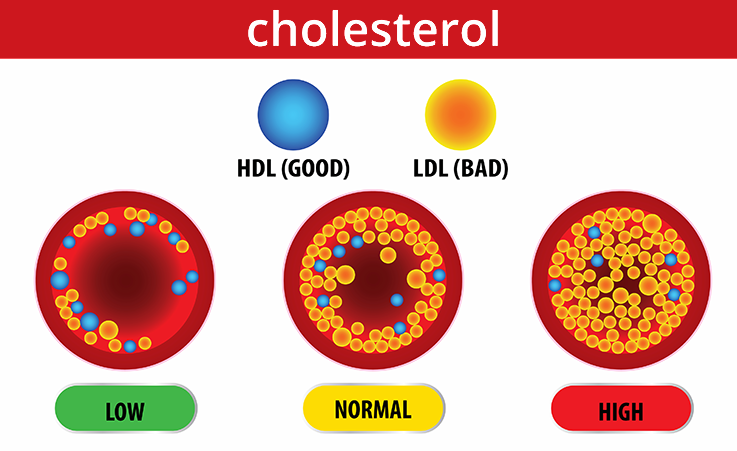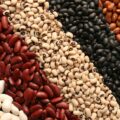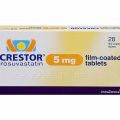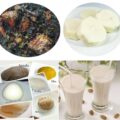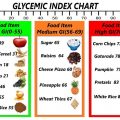Most Nigerian food is high in saturated fat and any food that is high in saturated fat has the tendency to increase cholesterol levels.
A study that evaluated the prevalence of high cholesterol in Nigeria reported that the pooled crude prevalence of hypercholesterolemia in Nigeria was 38% suggesting a high prevalence of hypercholesterolemia in Nigeria. According to the study, urbanization, lifestyles, diets, and culture appear to be driving an increasing prevalence, especially among women.
What is cholesterol?
Cholesterol is a waxy type of fat, or lipid, which moves throughout your body in your blood. Lipids are substances that do not dissolve in water, so they do not come apart in blood. Your body makes cholesterol, but you can also get it from foods. Cholesterol is only found in foods that come from animals.
Why is cholesterol important to our bodies?
Every cell in the body needs cholesterol, which helps the cell membranes form the layers. These layers protect the contents of the cell by acting as the gatekeeper to what things can enter or leave the cell. It is made by the liver and is also used by the liver to make bile, which helps you digest foods. Cholesterol is also needed to make certain hormones and to produce vitamin D. Your liver makes enough cholesterol to meet your body’s needs for these important functions.
What are the types of cholesterol?
Cholesterol moves throughout the body carried by lipoproteins in the blood. These lipoproteins include:
Low-density lipoprotein (LDL) is one of the two main lipoproteins. LDL is often called “the bad cholesterol.”
High-density lipoprotein (HDL) is the other main lipoprotein. HDL is often called “the good cholesterol.”
Very-low-density lipoproteins (VLDL) are particles in the blood that carry triglycerides.
If cholesterol is necessary, why do we have to worry about how much we have?
Having enough cholesterol to meet your needs is important. Having too much cholesterol can cause problems. If your cholesterol levels are high, the condition is called hypercholesterolemia. If your cholesterol levels are low, the condition is called hypocholesterolemia. It is not common to have cholesterol levels that are too low, but it can happen.
What is low-density lipoprotein (LDL)?
You might think it is weird that the low-density lipoprotein is called bad cholesterol when we always hear about how we should lower our cholesterol. However, LDL is “bad” because of what it does.
LDL can build up on the walls of your arteries and make them narrower. The fatty deposits form plaque that lines your arteries and may cause blockages. This build-up is called atherosclerosis. Arteries are the blood vessels that carry oxygen-rich blood away from your heart to all other organs in the body.
The fats linked to LDL cholesterol levels and those that you should minimize in your diet are called saturated fats and trans fats. Saturated fats are solid or wax-like when they are at room temperature. You mostly find saturated fats in products that come from animals, such as meat, milk, cheese, and butter.
Trans fats result when liquid fats are put through the hydrogenation process to become solid. Trans fats are found in fast foods and fried foods and are used to extend the shelf-life of processed foods like cookies, crackers, and bakery.
What is high-density lipoprotein (HDL)?
HDL is called the “good cholesterol.” It is good because it carries away other kinds of cholesterol. (including LDL), away from the arteries. It might help to think of HDL as a delivery truck while thinking of LDL as a dump truck. HDL drops other types of cholesterol off at the liver and they are removed from the body. It is believed that higher levels of HDL reduce the risk of heart disease.
What kind of test measures cholesterol?
Everyone over the age of 20 should get their cholesterol levels measured at least once every five years. Your healthcare provider will order a blood test that will indicate how much cholesterol is carried in your bloodstream. This test will give your cholesterol levels. Your provider might also order what is called a lipid panel or a lipid profile.
What do my cholesterol numbers mean?
Cholesterol numbers are measured in milligrams per deciliter (mg/dL). Here are the healthy levels of cholesterol, based on your age and gender:
Anyone age 19 or younger:
| Type of Cholesterol | Healthy Level |
| Total Cholesterol | Less than 170mg/dL |
| Non-HDL | Less than 120mg/dL |
| LDL | Less than 100mg/dL |
| HDL | More than 45mg/dL |
Men age 20 or older:
| Type of Cholesterol | Healthy Level |
| Total Cholesterol | 125 to 200mg/dL |
| Non-HDL | Less than 130mg/dL |
| LDL | Less than 100mg/dL |
| HDL | 40mg/dL or higher |
Women age 20 or older:
| Type of Cholesterol | Healthy Level |
| Total Cholesterol | 125 to 200mg/dL |
| Non-HDL | Less than 130mg/dL |
| LDL | Less than 100mg/dL |
| HDL | 50mg/dL or higher |
Triglycerides are not a type of cholesterol, but they are part of a lipoprotein panel (the test that measures cholesterol levels). A normal triglyceride level is below 150 mg/dL. You might need treatment if you have triglyceride levels that are borderline high (150-199 mg/dL) or high (200 mg/dL or more).
How To Fix Your Cholesterol with Fiber Foods (Statins Alternatives)
Dietary fiber is the edible parts of plants or analogous carbohydrates that are resistant to digestion and absorption in the human small intestine, with complete or partial fermentation in the large intestine. Dietary fiber includes polysaccharides, oligosaccharides, lignin, and associated plant substances.
There are two types of fiber: soluble and insoluble. While both are important, the two function differently in the body. Here’s how:
Soluble fiber. is a type of fiber that attracts water and forms a gel. This gel causes a slowing of the digestion process, which can be beneficial for weight loss. Foods high in soluble fiber include oats, legumes, edible plant skins, and nuts.
Insoluble fiber. is the type of fiber that, you guessed it, repels water. You can find insoluble fiber in foods such as veggies, fruits, nuts and seeds, wheat bran, and whole-grain foods like whole-wheat pasta and brown rice. Its primary benefit is to provide bulk to stool and aid in the movement through the digestive tract. Most diets have a combination of soluble and insoluble fiber, with 75 percent coming from insoluble fiber and 25 percent coming from soluble fiber.
How Fiber Affects your Cholesterol levels
The American Heart Association and the FDA recommend that we all eat at least 25 grams of dietary fiber per day. In a recent research study published in The Lancet, investigators pooled the results from 243 studies looking at the health effects of dietary fiber. They excluded any studies about fiber supplements — this was all about fiber from food. They ended up with data from over 4,600 people and found a very strong relationship between higher dietary fiber intake and better health outcomes. Basically, intake of at least 25 grams of food fiber a day is associated with a lower weight, blood pressure, blood sugars, and cholesterol, as well as a lower risk of developing (or dying from) diabetes, heart disease, strokes, and breast or colon cancer.
According to Mayo Clinic, soluble fiber can reduce the absorption of cholesterol into your bloodstream. Five to 10 grams or more of soluble fiber a day decreases your LDL cholesterol. Soluble fibers soak up water and become gel-like in the stomach and intestine. These fibers reduce the risk of heart disease by blocking the absorption of fats and cholesterol. This slows the absorption of sugars from the intestine and reduces LDL (“bad”) cholesterol and blood sugars. Here is a list of high soluble fiber food (Statins Alternatives) that can help you lower your cholesterol.
Citrus Fruits
Citrus fruits are not only delicious for their balanced tart and sweet taste, they are also an essential part of everyday nutrition, packing powerful health benefits beneath that tough, leathery rind. Citrus fruits are rich in multiple nutrients such as vitamin C, flavonoids, and fiber which confer vascular protection, reduce inflammation, and improve gastrointestinal function and health. Oranges are particularly high in soluble fiber, the kind of fiber that helps lower cholesterol levels. Compared to other fruits and vegetables, citrus fruits are unique in that they have a higher ratio of soluble to insoluble fiber. Here are some popular varieties of citrus fruits:
- Sweet oranges: Valencia, navel, blood orange, cara cara
- Mandarins: Satsuma, clementine, tangor, tangelo
- Limes: Persian, key lime, kaffir
- Grapefruit: White, ruby red, oroblanco
- Lemons: Eureka, Meyer
- Other kinds: Citron, sudachi, yuzu, pomelos
Beans
Beans and legumes are the fruits or seeds of a family of plants called Fabaceae. They are commonly eaten around the world and are a rich source of fiber and B vitamins. They are also a great replacement for meat as a source of vegetarian protein. Beans and legumes have a number of health benefits, including reducing cholesterol, decreasing blood sugar levels, and increasing healthy gut bacteria. Black beans are a great source of fiber, protein, and folate. One cup (172 grams) of cooked black beans contains roughly 15 grams of fiber. Lima beans are another excellent source of fiber.
Sweet Potatoes
Sweet potatoes are sweet, starchy root vegetables that are grown worldwide. They come in a variety of sizes and colors — including orange, white, and purple — and are rich in vitamins, minerals, antioxidants, and fiber. Not to mention, they provide a number of health benefits and are easy to add to your diet. The fiber and antioxidants in sweet potatoes are advantageous to gut health.
Sweet potatoes contain two types of fiber: soluble and insoluble. Certain types of soluble fiber known as viscous fibers absorb water and soften your stool. Fiber-rich diets like sweet potatoes providing between 20–33 grams of fiber per day have also been linked to a lower risk of colon cancer and more regular bowel movements
Guava
Guavas are tropical trees originating in Central America. Their fruits are oval in shape with light green or yellow skin and contain edible seeds. What’s more, guava leaves are used as an herbal tea and leaf extract as a supplement. Guava fruits are amazingly rich in antioxidants, vitamin C, potassium, and fiber. This remarkable nutrient content gives them many health benefits.
The higher levels of potassium and soluble fiber in guavas are also thought to contribute to improved heart health. Additionally, guava leaf extract has been linked to lower blood pressure, a decrease in “bad” LDL cholesterol, and a rise in “good” HDL cholesterol. Since high blood pressure and high levels of LDL cholesterol are linked to higher risks of heart disease and stroke, taking guava leaf extract could lead to valuable benefits.
A 12-week study in 120 people found that eating ripe guava before meals caused an overall decrease in blood pressure by 8–9 points, a reduction in total cholesterol by 9.9%, and an increase in “good” HDL cholesterol by 8%.
Okro
Okro or Okra belongs to the same plant family as hibiscus and cotton. The term “okra” most commonly refers to the edible seedpods of the plant. Okra contains potassium, vitamin B, vitamin C, folic acid, and calcium. It’s low in calories and has a high dietary fiber content.
Okra is sodium, fat, and cholesterol free and contains only 25 calories per one-half cup serving. Each serving also contains 2 grams of fiber. Nearly half of the fiber in okra is soluble fiber, which helps lower cholesterol levels and reduces the risk of heart disease.
Apple
An apple is an edible fruit produced by an apple tree. Apple trees are cultivated worldwide and are the most widely grown species in the genus Malus. The tree originated in Central Asia, where its wild ancestor, Malus sieversii, is still found today. Apples pack various vitamins and minerals and are a good source of the soluble fiber pectin. Apple pectin may have many health benefits, such as a reduced risk of heart disease and improved gut function. A medium-sized apple contains 1 gram of soluble fiber which makes it a good candidate for reducing bad cholesterol.
Oats
Oats are an incredibly nutritious food packed with important vitamins, minerals, and antioxidants. In addition, they’re high in fiber and protein compared to other grains. Oats contain some unique components — in particular, the soluble fiber beta-glucan and antioxidants called avenanthramides. Oats are high in soluble fiber, making oat cereals a better choice than bran for reducing bad cholesterol. A bowl of oatmeal made from 3/4 cup of dry oats contains 3 g of soluble fiber. A serving of cooked oat bran cereal (3/4 cup) has 2.2 g, and 1 cup of oat flakes has around 1.5 g.
Millet
Millet is one of the oldest cultivated grains in the world and has been grown throughout Africa and Southeast Asia for thousands of years. Millet can be used to make bread, beer, cereal, and other dishes. Even today, millet is a staple food around the world. Millet contains soluble fiber, which produces a viscous substance in your gut. In turn, this traps fats and helps reduce cholesterol levels. One animal study found that those fed foxtails and proso millet had significantly reduced triglyceride levels, compared with the control group.
Dates
Dates are a popular type of fruit that has been around for a long time. The origins of dates can be traced back to almost 5320 BC. The fruit is a staple item for people in the middle east and North Africa. Mainly cultivated in these regions, dates are highly beneficial due to the innate composition of macronutrients and many other healthy elements. With almost 7 grams of fiber in a 3.5-ounce serving, including dates in your diet is a great way to increase your fiber intake and reduce bad cholesterol levels.

